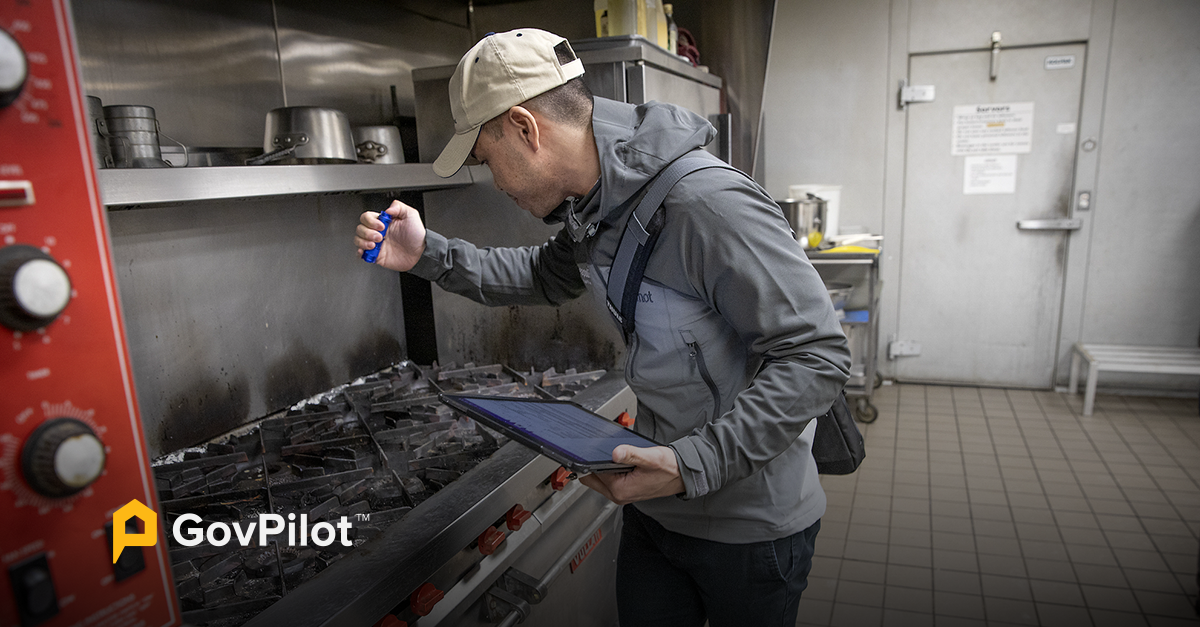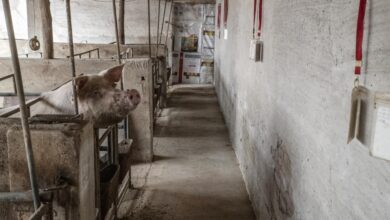
Food safety government inspection is crucial for ensuring the safety of the food we consume. From historical regulations to modern inspection methods, this process plays a vital role in protecting public health. Routine, complaint-driven, and recall-related inspections all contribute to a complex system designed to prevent foodborne illnesses. Understanding the steps involved, from initial contact to facility inspection, is key to appreciating the multifaceted nature of this critical process.
This exploration delves into the objectives, methods, and procedures behind these inspections. We’ll examine the various stakeholders, legal frameworks, and standards that shape these vital processes. The impact on businesses, the importance of compliance, and potential consequences of non-compliance will also be highlighted.
Introduction to Food Safety Government Inspection
Food safety government inspections are crucial for ensuring the safety and quality of the food supply. These inspections are vital for protecting public health by identifying and mitigating potential hazards in food production, processing, and distribution. They are a critical component of a robust food safety system, aiming to prevent foodborne illnesses and maintain consumer confidence in the food we eat.Historically, food safety regulations and inspections have evolved in response to outbreaks of foodborne illnesses.
Early regulations were often reactive, addressing specific problems as they arose. Over time, a more proactive and preventative approach has emerged, emphasizing comprehensive inspection protocols and ongoing monitoring. This shift reflects a growing understanding of the complex factors that contribute to foodborne illness and the importance of preventing these problems from occurring in the first place.
Types of Food Safety Inspections
Food safety inspections are categorized into various types based on their purpose and triggers. Routine inspections are conducted periodically to ensure compliance with established regulations. These inspections often cover a range of aspects, from facility cleanliness and sanitation to employee training and record-keeping. Complaint-driven inspections are initiated in response to consumer complaints or reports of potential food safety violations.
These inspections focus specifically on the concerns raised in the complaint. Recall-related inspections are triggered by a food safety recall. These inspections are crucial for identifying the root cause of the problem, ensuring corrective actions are implemented, and preventing future occurrences of similar incidents.
Key Steps in a Typical Food Safety Inspection Process
A typical food safety inspection follows a structured process, ensuring a thorough and systematic evaluation. The process is designed to gather comprehensive information about food safety practices and identify any potential areas for improvement.
| Step | Description |
|---|---|
| Initial Contact | The inspector contacts the facility in advance to schedule the inspection and inform them of the purpose and scope of the visit. This stage involves confirming facility accessibility and necessary personnel availability. |
| Facility Inspection | The inspector physically examines the facility’s infrastructure, equipment, and practices, paying close attention to sanitation, hygiene, and adherence to food safety regulations. This includes checking storage areas, processing equipment, and worker hygiene practices. |
| Documentation Review | The inspector reviews relevant documents, including food safety plans, employee training records, and maintenance logs, to ensure that the facility’s operations comply with established regulations. This is a vital step in assessing the facility’s internal control system. |
| Interviewing Staff | The inspector interviews facility staff to gather information about their knowledge and understanding of food safety procedures. This helps understand operational processes and identify potential gaps in knowledge and implementation. This phase also helps determine if employees are following proper procedures. |
Scope and Objectives of Food Safety Inspections
Food safety inspections are critical for safeguarding public health. These inspections play a vital role in ensuring the safety and quality of food products available to consumers. They go beyond simple compliance checks, aiming to proactively identify and address potential hazards throughout the food production chain.These inspections are not just about catching violations; they are a fundamental part of a robust food safety system, acting as a preventive measure against foodborne illnesses.
By identifying and rectifying problems early, inspections help prevent widespread outbreaks and protect consumers from serious health consequences.
Overall Goals and Objectives
Food safety inspections have a multifaceted set of objectives. Primary goals include preventing foodborne illnesses, protecting public health, and ensuring that food products meet established safety standards. These standards are designed to mitigate risks associated with contamination, improper handling, and inadequate processing. Secondary objectives often include promoting compliance with regulations and educating businesses about best practices in food safety.
Stakeholders in Food Safety Inspections
Multiple stakeholders are involved in the process of food safety inspections. These include government inspectors, food business owners, and ultimately, the consumers who rely on the safety of the food they consume. Each group plays a unique role in ensuring a safe food supply.
- Inspectors: Government inspectors are responsible for conducting thorough inspections of food facilities, evaluating compliance with regulations, and identifying potential hazards. They are trained professionals with expertise in food safety, and their role is to uphold public health standards.
- Business Owners: Food business owners are crucial in maintaining a safe environment. They are responsible for implementing appropriate safety procedures and ensuring their employees are adequately trained. Their cooperation is essential for effective inspections and adherence to regulations.
- Consumers: Consumers are the ultimate beneficiaries of effective food safety inspections. Their health and well-being are directly impacted by the safety of the food they purchase and consume. They play an indirect role in the process through their reliance on the system to protect them from contamination.
Routine vs. Complaint-Driven Inspections
Routine and complaint-driven inspections differ in their focus and objectives. Routine inspections are scheduled visits to food establishments, aimed at maintaining a high level of safety and compliance. Complaint-driven inspections, on the other hand, respond to specific consumer complaints or reported issues.
- Routine Inspections: Routine inspections are crucial for proactive safety monitoring. They are scheduled on a regular basis, aiming to identify and address potential issues before they lead to significant problems. The goal is to maintain a high level of food safety throughout the food supply chain.
- Complaint-Driven Inspections: Complaint-driven inspections are reactive, addressing specific concerns raised by consumers. These inspections are essential for responding to reported issues and ensuring prompt investigation and resolution of problems. Their focus is on addressing the specific complaint and mitigating potential risks.
Contribution to Public Health
Food safety inspections directly contribute to public health by reducing the risk of foodborne illnesses. These illnesses can cause severe health problems, ranging from mild discomfort to life-threatening complications. By identifying and correcting potential hazards, inspections protect public health and prevent widespread outbreaks. They are a vital component of a preventative approach to maintaining a healthy population.
Legal Framework in the US
The US has a comprehensive legal framework for food safety inspections, primarily governed by the Food Safety Modernization Act (FSMA). This act establishes clear standards and guidelines for food facilities, requiring compliance with specific regulations.
The Food Safety Modernization Act (FSMA) is a landmark piece of legislation that aims to modernize the food safety system in the United States.
The act provides the foundation for regulatory oversight and enforcement, ensuring that food products meet safety standards. Different agencies, like the FDA (Food and Drug Administration), are responsible for various aspects of the framework.
Methods and Procedures for Food Safety Inspections
Food safety inspections are crucial for ensuring the safety and well-being of consumers. Thorough inspections identify potential hazards and enforce regulations to maintain high standards in food handling practices. This process involves a structured approach that combines various methods and procedures to assess the entire food production and handling chain.Inspectors employ a range of techniques to comprehensively evaluate food safety practices.
These assessments involve careful observation, data collection, and analysis to pinpoint potential risks and areas needing improvement.
Methods Used by Inspectors to Assess Food Safety Practices
Inspectors use a variety of methods to assess food safety practices. These methods encompass observation, document review, sampling, and interviews with personnel involved in food handling. A key aspect is evaluating the overall sanitation practices, including cleanliness of facilities and equipment.
Common Inspection Tools and Technologies
Inspection tools are essential for evaluating food safety. Thermometers, calibrated to measure temperatures accurately, are vital for determining if food is stored and handled within safe temperature ranges. Digital thermometers, with their precise readings, offer improved accuracy compared to traditional mercury thermometers. High-resolution cameras are increasingly used for documenting areas that may be difficult to access or observe, providing detailed visual records.
Furthermore, sophisticated testing equipment is utilized for detecting pathogens and verifying the effectiveness of sanitation procedures. These tools enhance the efficiency and effectiveness of the inspection process.
Procedures for Documenting Observations During Inspections
Accurate documentation is vital for a successful food safety inspection. Inspectors meticulously record their observations, including specific details of non-compliance. This documentation includes dates, times, locations, and descriptions of any observed violations. Photographs and videos, if applicable, are used to document visual evidence of non-compliant conditions. Detailed notes regarding the nature of violations and any corrective actions needed are recorded.
All records are maintained in a standardized format to ensure clarity and traceability.
Table Outlining Food Safety Hazards
| Hazard Category | Example Hazards |
|---|---|
| Temperature Control | Improper storage temperatures, cross-contamination, inadequate cooling or reheating procedures |
| Sanitation | Improper handwashing techniques, unclean surfaces (e.g., cutting boards, utensils), inadequate cleaning and disinfection procedures, improper waste disposal |
| Pest Control | Presence of pests (e.g., rodents, insects), unsanitary conditions conducive to pest infestations, inadequate pest control measures |
| Personal Hygiene | Improper hand hygiene practices, lack of hairnets or other protective gear, coughing or sneezing over food preparation areas |
| Allergen Management | Cross-contamination of food products with allergens, inadequate labeling of allergen-containing foods, lack of procedures to prevent allergen contamination |
Food Safety Standards and Regulations
Food safety standards and regulations are crucial for protecting public health. They establish minimum requirements for food production, handling, and processing to prevent contamination and ensure safe consumption. These regulations vary across regions, reflecting different cultural practices and environmental factors. Understanding these standards is essential for both food producers and consumers to ensure the safety of the food supply.Compliance with food safety regulations is paramount, not only to avoid potential health hazards but also to maintain market access and reputation.
Different regions have distinct legal frameworks and standards that dictate how food is handled and processed. This creates a complex interplay of requirements that producers must navigate.
Key Food Safety Standards and Regulations
Food safety standards are established to safeguard public health by ensuring the safety and quality of food. These standards cover various aspects of food production, processing, handling, and storage. They are developed and enforced by governmental agencies and organizations to mitigate risks of foodborne illnesses and maintain consumer confidence in the food supply. Examples include requirements for hygiene practices, temperature control, and ingredient labeling.
Comparison of Food Safety Standards in Different Regions
Different regions adopt varying approaches to food safety, reflecting diverse cultural contexts and environmental conditions. These differences can impact the specific requirements for food handling, labeling, and traceability. For instance, the European Union’s food safety regulations often differ from those in the United States or Asia. Differences in agricultural practices, local resources, and cultural traditions can all influence the standards set for food safety.
- North America (e.g., US and Canada): Focus on preventive controls, hazard analysis, and risk-based approaches. Regulations often emphasize traceability and record-keeping. Examples include the FDA Food Safety Modernization Act (FSMA) in the US, which emphasizes preventive controls for food safety.
- Europe (e.g., EU): A comprehensive regulatory framework encompassing various aspects of food production, processing, and distribution. Stricter controls on chemical residues and traceability are common features. The EU’s focus on traceability helps track food products throughout the supply chain, improving control and accountability.
- Asia (e.g., Japan, China): Regulations may vary significantly based on individual countries and regions. Emphasis on hygiene and sanitation often aligns with cultural practices. The implementation of HACCP (Hazard Analysis and Critical Control Points) principles may vary in degree and scope.
Importance of Compliance with Food Safety Regulations
Adherence to food safety regulations is crucial for safeguarding public health. It prevents the occurrence of foodborne illnesses, protects consumer well-being, and promotes consumer confidence in the food supply. This is vital to maintain a healthy population and protect the economy. Failure to comply can lead to significant repercussions for food businesses.
Consequences of Non-Compliance with Food Safety Regulations
Non-compliance with food safety regulations can result in severe consequences, including fines, legal action, product recalls, and reputational damage. The severity of the consequences often depends on the nature and extent of the violation. A business’s reputation and ability to operate can be severely impacted.
- Fines: Monetary penalties imposed by regulatory agencies for violations.
- Legal action: Legal proceedings initiated by regulatory agencies or consumers against the violating entity.
- Product recalls: Removal of contaminated products from the market to protect consumers from harm.
- Reputational damage: Loss of public trust and confidence in the business due to safety concerns.
Common Food Safety Violations and Their Potential Consequences, Food safety government inspection
Several common violations can compromise food safety. Recognizing these violations and implementing preventive measures can help prevent incidents.
| Violation | Potential Consequences |
|---|---|
| Improper temperature control during storage | Foodborne illness outbreaks, product spoilage, financial losses. |
| Lack of handwashing procedures | Cross-contamination, bacterial growth, health risks for consumers. |
| Insufficient sanitation practices | Contamination of surfaces and equipment, risk of illness, reputational damage. |
| Inadequate pest control | Contamination of food with pests, potential for allergic reactions. |
| Failure to maintain accurate records | Difficulty in tracing sources of contamination, increased risk of future violations. |
Impact of Food Safety Inspections on Businesses

Food safety inspections are crucial for maintaining public health and protecting consumers. These inspections, while sometimes perceived as burdensome, play a vital role in shaping the success and sustainability of food businesses. Understanding the multifaceted impact of these inspections, both positive and negative, is essential for businesses to thrive in the modern food industry.
Benefits of Adhering to Food Safety Standards
Adherence to food safety standards yields numerous benefits for businesses. A strong commitment to hygiene, proper handling procedures, and maintaining a clean environment fosters consumer trust and confidence. This trust translates into positive brand perception, leading to increased customer loyalty and repeat business. Furthermore, consistent adherence to standards can minimize the risk of foodborne illnesses, preventing costly lawsuits and reputational damage.
This proactive approach also reduces the risk of product recalls, which can have devastating financial consequences.
Potential Risks of Non-Compliance
Non-compliance with food safety regulations carries significant risks. Violations can result in fines, temporary or permanent closure of the business, and negative publicity that can severely damage the business’s reputation. Failure to meet safety standards also exposes the business to significant legal liabilities. The potential for lawsuits stemming from foodborne illnesses can be financially crippling and have long-lasting consequences on the business’s ability to operate.
Examples include recalls of products, impacting both the business’s financial well-being and its reputation.
Impact on Business Reputation and Consumer Trust
Food safety inspections directly influence a business’s reputation and consumer trust. Positive inspection results enhance a business’s image as a reliable and trustworthy provider of safe food. Conversely, negative findings can severely tarnish the business’s image and lead to a loss of consumer confidence. Consumers are increasingly discerning about the food they consume and actively seek out businesses with strong food safety records.
The risk of reputational damage due to negative publicity can be substantial, as demonstrated by numerous examples of businesses facing boycotts or declining sales following negative inspection reports.
Positive and Negative Outcomes of Food Safety Inspections
Understanding the potential outcomes of food safety inspections can help businesses develop proactive strategies.
| Outcome | Description |
|---|---|
| Positive | Improved food safety practices, leading to reduced risk of foodborne illnesses, increased customer loyalty, and a better reputation. Businesses that consistently maintain high standards are more likely to attract and retain customers. This positive feedback loop leads to increased profitability. A proactive approach towards food safety is essential for long-term success. |
| Negative | High inspection costs, potential fines, temporary or permanent closure of the business, damage to reputation, and loss of consumer trust. Businesses that fail to meet food safety standards risk costly legal battles and a substantial drop in sales. Negative outcomes can impact the long-term viability of the business. |
Illustrative Examples of Food Safety Inspections
Food safety inspections are crucial for maintaining public health and ensuring safe food products. These inspections, often conducted by government agencies, help identify and address potential hazards in various food handling environments. Understanding successful and unsuccessful inspections, as well as the role of inspectors, is vital for businesses and consumers alike.
A Case Study of a Successful Inspection
A local bakery, “Sweet Sensations,” underwent a routine food safety inspection. Inspectors meticulously checked the bakery’s facilities, equipment, and procedures. They verified that the bakery maintained a clean and sanitary environment, ensuring proper handwashing stations, and adherence to temperature control protocols for ingredients and finished goods. Storage areas were properly organized and pest control measures were up to standard.
All employees were well-trained in food safety procedures. The inspectors noted the excellent record-keeping and the proactive approach to food safety implemented by the bakery management. The inspection resulted in no violations and the bakery was praised for its exemplary practices.
A Case Study of a Food Safety Violation
A local restaurant, “The Golden Spoon,” faced significant repercussions after an inspection revealed critical violations. The inspectors discovered inadequate temperature control for potentially hazardous foods, leading to potential bacterial growth. Improper handwashing practices by staff were also noted. Furthermore, the restaurant lacked proper pest control measures, resulting in a noticeable pest infestation. These violations led to the restaurant being cited for multiple food safety violations, resulting in fines and a temporary closure until the issues were rectified.
The restaurant also faced reputational damage, losing customer trust and potentially impacting future business opportunities.
Hypothetical Scenario: Food Safety Inspection in a Food Truck
Imagine a food truck specializing in gourmet sandwiches. During a surprise inspection, the inspector observes the food truck’s preparation area. The truck lacks proper handwashing facilities and the cutting board used for raw chicken is also used for ready-to-eat ingredients. The truck also has poor ventilation and the storage of ingredients is not well-organized, raising concerns about cross-contamination and potential temperature abuse.
The inspector would likely cite the truck for several violations. These could include the lack of handwashing facilities, improper food handling, and inadequate temperature control. The severity of the violations could lead to immediate closure or suspension of the food truck’s operations until the issues are addressed.
The Role of Inspectors in Identifying and Addressing Food Safety Risks
Food safety inspectors play a vital role in safeguarding public health. Their expertise allows them to identify potential hazards and evaluate compliance with food safety regulations. Inspectors are trained to look for inconsistencies in food handling practices, storage, preparation, and service. They investigate potential contamination sources, and evaluate the overall sanitation and hygiene standards. Their findings help to ensure that food businesses are adhering to safety regulations and that consumers are protected from foodborne illnesses.
This proactive approach by inspectors contributes to a safer food supply chain.
Future Trends in Food Safety Inspections

The landscape of food safety is constantly evolving, driven by technological advancements and changing consumer expectations. Food safety inspections are adapting to these shifts, incorporating new tools and methodologies to maintain and improve the safety of our food supply. This transformation is not just about efficiency; it’s about ensuring a more reliable and transparent system for everyone involved.Emerging technologies are revolutionizing how food safety inspections are conducted, offering unprecedented opportunities for proactive identification and mitigation of potential hazards.
These advancements are not merely incremental improvements but represent a fundamental shift in how we approach food safety assurance.
Emerging Technologies in Food Safety Inspections
Technological advancements are rapidly transforming food safety inspections. From sophisticated sensors to advanced data analytics, new tools are enabling more efficient and effective inspections, potentially reducing the risk of foodborne illnesses. These tools are capable of detecting minute variations that could indicate potential contamination, enabling faster responses to safety issues.
- Real-time Monitoring Systems: Sensors embedded in food processing facilities can continuously monitor critical parameters like temperature, humidity, and chemical levels. These systems provide immediate alerts if thresholds are exceeded, allowing for swift intervention to prevent contamination. For instance, automated systems in meat processing plants can monitor temperature throughout the entire storage and processing chain, providing a clear audit trail of product safety.
- Advanced Imaging Techniques: Sophisticated imaging technologies, like hyperspectral imaging, can detect subtle changes in food composition that might indicate contamination or spoilage. These technologies are being used to identify potential food fraud or adulteration. Imagine a system that quickly and reliably identifies genetically modified organisms in a food supply, allowing for rapid corrective action.
- Blockchain Technology: Blockchain technology can create a transparent and immutable record of food products’ journey from farm to table. This allows for traceability and rapid identification of contaminated products, minimizing the scope of recalls. A blockchain-based system could track every step in a coffee bean’s journey from harvest to distribution, providing a complete audit trail and building consumer confidence.
Automation and Data Analysis in Inspections
Automation and data analysis are poised to streamline food safety inspections, enabling faster and more comprehensive assessments. These tools can identify patterns and anomalies that might indicate potential risks, facilitating preventative measures. The use of machine learning algorithms can analyze vast amounts of data, potentially revealing previously undetected trends.
- Automated Inspection Robots: Robots equipped with sensors and imaging technology can perform repetitive tasks like inspecting food processing equipment and facilities. This can lead to more thorough inspections in less time, potentially improving efficiency and accuracy. Automated inspections can ensure consistent monitoring of critical areas, providing reliable data for decision-making.
- Data-Driven Risk Assessment: Data analytics can identify high-risk areas and products, allowing inspectors to focus their efforts on the most vulnerable points in the food supply chain. By analyzing historical data, inspection patterns, and environmental conditions, risk assessment can be more precise.
- Predictive Modeling: Predictive modeling algorithms can forecast potential food safety risks based on historical data, allowing for proactive interventions. For example, if a particular type of produce consistently experiences contamination during a specific season, predictive models can suggest preventative measures.
Consumer Feedback and Food Safety Standards
Consumer feedback plays a critical role in shaping food safety standards and inspections. Direct feedback from consumers, through surveys and social media, can highlight concerns and suggest areas for improvement. This input is invaluable in identifying emerging trends and addressing specific safety issues.
- Consumer Surveys and Feedback Mechanisms: Establishing clear channels for consumers to report concerns and provide feedback on food safety issues is crucial. This information can be analyzed to identify patterns and areas requiring attention. For example, a survey can help identify a prevalent concern regarding the safety of a particular type of seafood.
- Social Media Monitoring: Monitoring social media platforms for consumer opinions and concerns about food safety can provide valuable insights. This information can alert inspectors to potential emerging issues or safety concerns that need immediate attention. By tracking online discussions, authorities can identify and address food safety issues before they escalate.
The Future of Food Safety Inspection Procedures
The future of food safety inspections is characterized by a seamless integration of technology and human expertise. Inspections will become more proactive, predictive, and data-driven, leading to a more efficient and effective food safety system.
- Proactive Inspections: Inspections will shift from reactive to proactive, identifying and mitigating potential risks before they lead to outbreaks. Proactive strategies will focus on preventative measures, rather than just addressing problems after they occur.
- Collaboration and Knowledge Sharing: Enhanced collaboration between food producers, inspectors, and regulatory agencies will be essential. This will lead to a more efficient and comprehensive approach to ensuring food safety. This involves sharing data, best practices, and insights to foster a more collaborative and integrated approach to food safety.
Closing Notes
In conclusion, food safety government inspections are essential for maintaining public health and ensuring the safety of our food supply. The process, involving various stakeholders and procedures, aims to protect consumers and businesses alike. Future trends, such as emerging technologies, will undoubtedly shape the future of these inspections. Understanding the complexities and importance of food safety government inspection is critical for fostering a safer and more secure food system.





